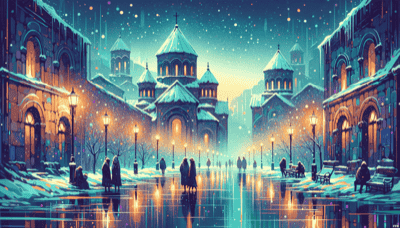We're here to help you keep count of the days to or since a date. Just click the button below and enter your chosen date to get started. Also choose the suggested days or search for a special day above #countingthedays

History and Traditions: New Year's Eve in Armenia, known as "Amanor," is deeply rooted in both ancient pagan traditions and Christian beliefs. Historically, it marks the rebirth of the sun god Mitra. With the advent of Christianity, these traditions were adapted to fit the Christian calendar.
Modern Celebrations: Today, New Year's Eve is one of the most significant and joyous holidays in Armenia. It is a time for family gatherings, extensive feasting, and warm hospitality. Armenians prepare for this day well in advance:
Cleaning and Decorating: Homes are thoroughly cleaned and decorated to symbolize a fresh start. Christmas trees (Tonatsar) are common, alongside Armenian-specific decorations.
Festive Table: A lavish spread of food is prepared, which includes traditional dishes such as dolma (stuffed grape leaves), basturma (cured beef), and an assortment of pastries like pakhlava (baklava). The table remains set from December 31st until January 2nd to ensure that anyone who visits during this time will be welcomed with food.
Toasting and Wishes: At midnight, families toast with Armenian brandy or wine, congratulate each other, and exchange good wishes for health, happiness, and prosperity.
Gift Giving: Exchanging presents is customary on New Year’s Day rather than on Christmas Day.
Khash: On the morning of January 1st or 2nd, it's traditional to eat khash—a hearty winter soup made from cow or lamb feet stewed overnight—which is believed to have restorative properties after a night of celebration.
Public Celebrations: Public squares such as Republic Square in Yerevan become focal points for festivities with live music concerts, fireworks displays at midnight, and crowds gathering to celebrate together. The celebrations often continue until dawn and can last for several days into January.